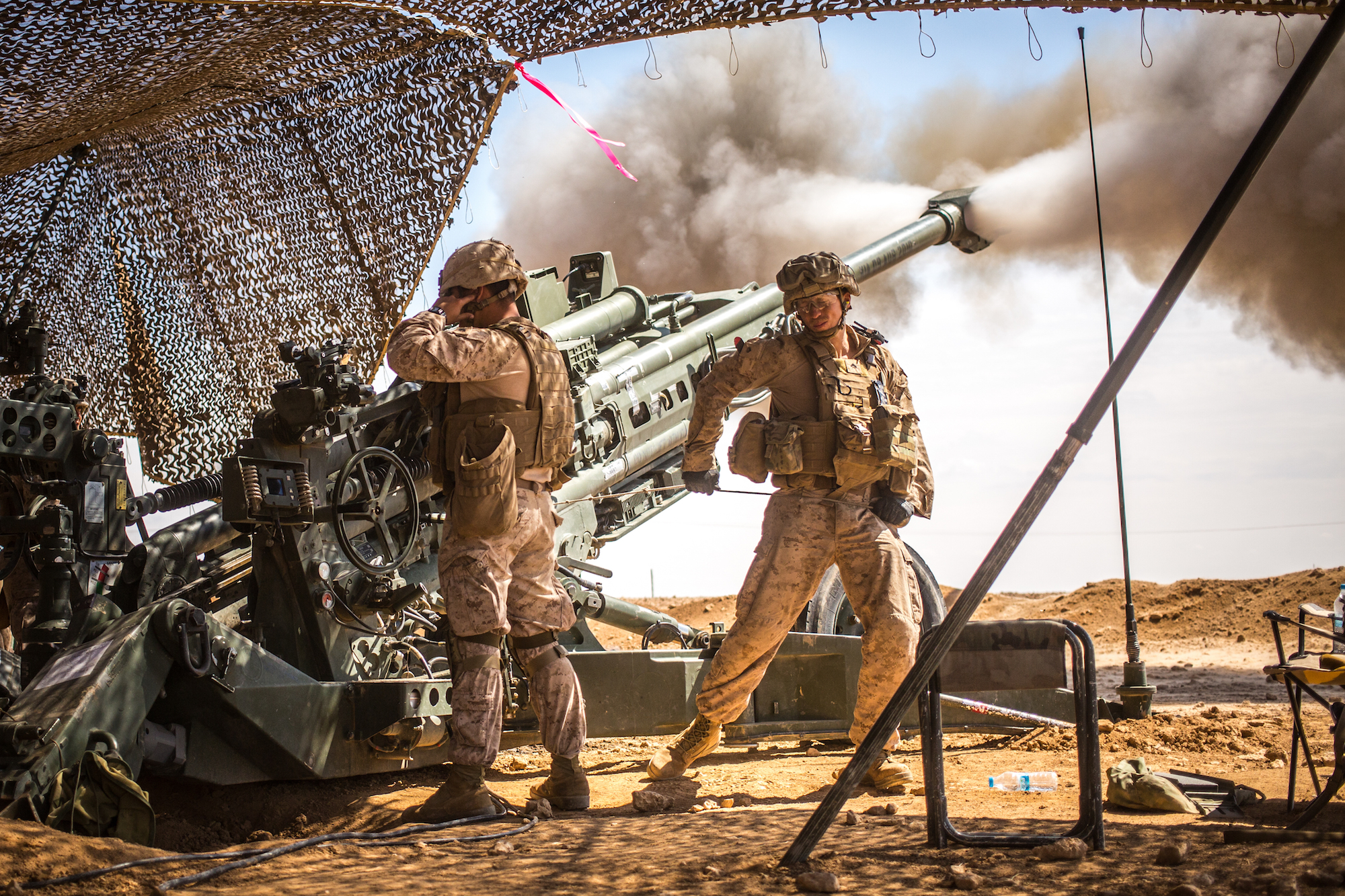
CAMP PENDLETON, Calif. – The Marine Corps touts its ship-based Marine expeditionary unit deployments as its go-to, “911” force when needed. The Navy highlights its amphibious ready groups for the forward presence and “power projection” it gives overseas combatant commanders.
“We’re going to do whatever is asked,” Col. Clay C. Tipton, who commands the 11th Marine Expeditionary Unit, said during a Wednesday roundtable with journalists. The 2,400-member Camp Pendleton-based force returned home in mid-May from a seven-month deployment with San Diego-based Makin Island Amphibious Ready Group.
For the 11th MEU and Makin Island ARG, those orders ran the gamut from combat support operations to training foreign military partners and community relations overseas. At one point while in Djibouti, 11th MEU maintained a quick-reaction force ready and poised to augment U.S. embassy security if needed, although the call never came to do so. Most notably, an 11th MEU detachment that included field artillery cannoneers deployed to northern Syria for several weeks.

The MEU’s task force spent more than two months in Syria as part of Operation Inherent Resolve, said the MEU spokesman, Maj. Craig Thomas. “The task force executed over 400 fire missions and fired more than 4,500 rounds from M777 howitzers to support our coalition partners fighting to isolate and then liberate Raqqah from ISIS.”
The task force formed and trained in Kuwait before it deployed to Syria to support local forces fighting Islamic State militants.
“We can do contingency work,” sending combat forces to support ongoing contingencies, Tipton said, such as the Marines who supported the OIR mission. Crisis-response work, he added, “is our bread and butter.”
A U.S. Central Command statement to USNI News in March offered a general comment about Marine Corps mission support. “U.S. Marine Corps artillery unit deployed to provide the Coalition greater agility to enable and expedite our Syrian partnered forces defeat of ISIS in Raqqah,” Commander, Joint Task Force-Operation Inherent Resolve said in the statement. “Our partners in Syria face an entrenched foe and like the Iraqis will require additional support to enable them to fight and defeat ISIS in Raqqah. The deployment of these additional key enabling capabilities allows the coalition to provide flexible all-weather fire support to our Syrian partners when they need it most.”
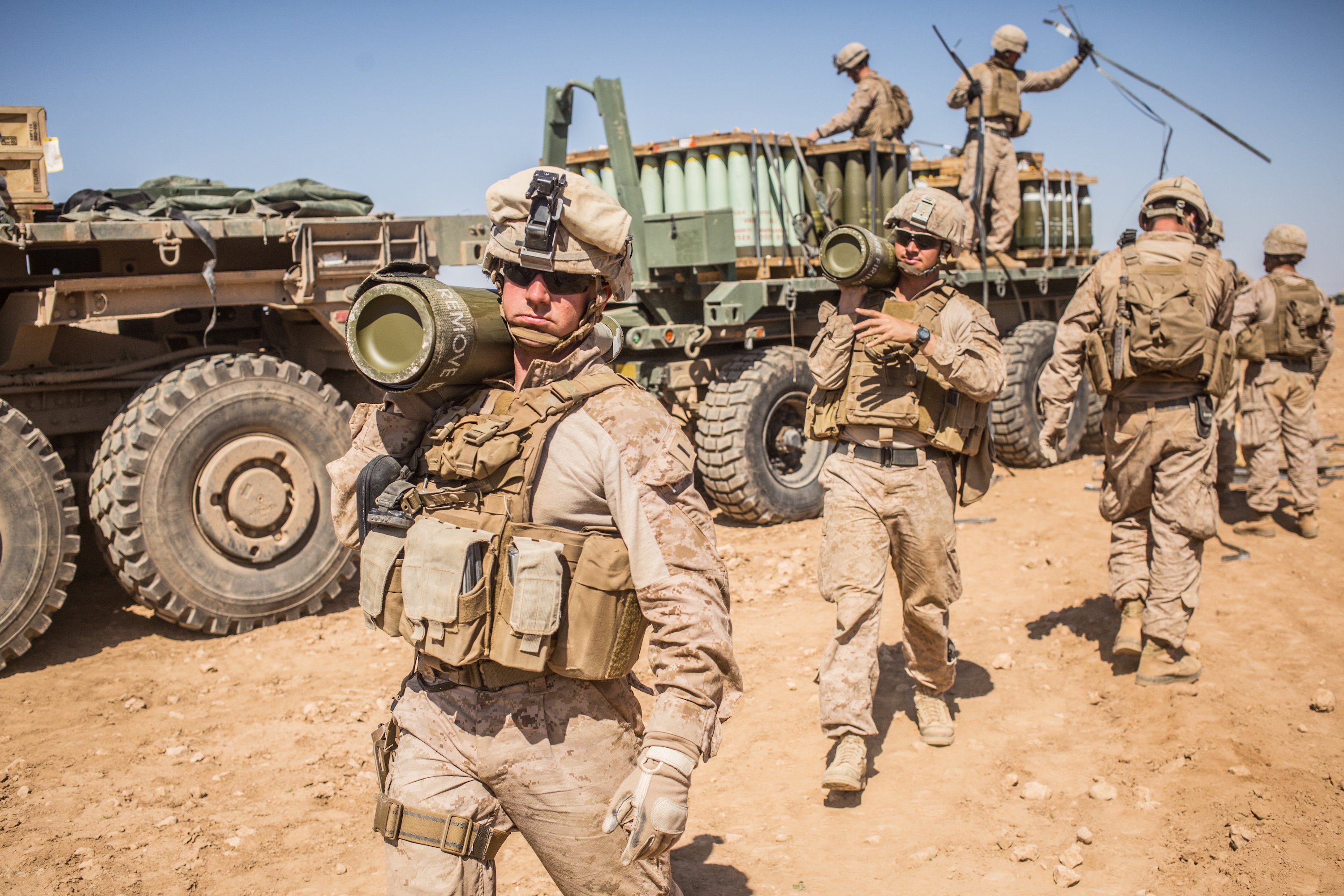
MEU officials also were mum on details about the Syria deployment and other combat-related missions during the deployment, including what if any air support from its air combat element, which included AV-8B Harrier jets, provided in the ongoing U.S. operations against the Islamic State. MEU officials referred any questions about that to CENTCOM.
“Some stuff we simply cannot talk about” because of classification, Tipton said.
Senior officials emphasized that 11th MEU, like others, train and certify to conduct any of 13 missions. These “mission essential tasks” range from amphibious assaults and raids to embassy evacuations, recovery of downed aircrews and airfield seizures, along with foreign military training and engagement. “We can conduct all 13 if we are called upon,” said Tipton. That combat or mission readiness remains true throughout the entire deployment, even in the days and weeks spent crossing the Pacific and Indian oceans. “Whether our equipment is dirty or clean… we are prepared,” he added.
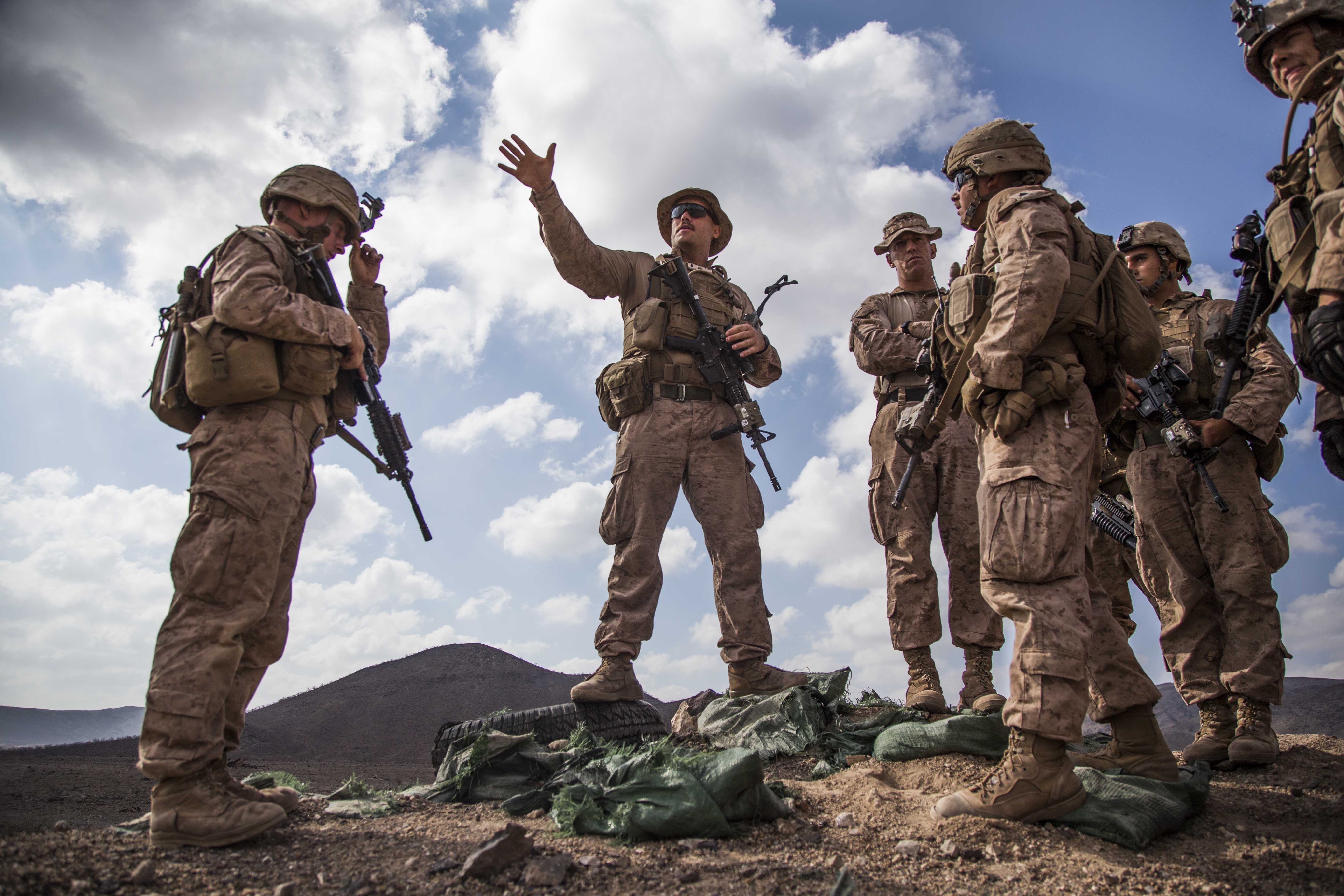
The sea-going nature of the ARG/MEU is why it’s the go-to force for combatant commanders, often juggling planning and executing several missions within six hours.
“With MEUs, you get proximity,” said Master Gunnery Sgt. Adrian D. Virges, the 11th MEU operations chief, adding, “we are there standing by to stand by.”
As Syria showed, the only certainty in a schedule MEU/ARG deployment is uncertainty. It’s not uncommon for a MEU to deploy personnel ashore by air into combat zones to support ongoing operations or do a specific mission. The 11th MEU went ashore on a larger scale in 2004, when it deployed on its ships a month early for the Persian Gulf and was in fighting in Iraq after several days of sustainment training in Kuwait. The 24th MEU deployed its air-ground task force into Afghanistan in 2008 and saw heavy fighting in the Garmsir district. Last year, the 26th MEU sent a detachment with artillery to northern Iraq to support U.S. Army advisers and Iraqi security forces fighting Islamic State fighters in Mosul.
The 11th MEU trained or operated in 24 different countries, often with smaller detachments or task forces, said Lt. Col. William G. Clester, 11th MEU executive officer. The force returned home in mid-May with the Makin Island ARG led by Amphibious Squadron 5 and big-deck assault amphibious ship USS Makin Island (LHD-8) , transport dock USS Somerset (LPD-25) and dock landing ship USS Comstock (LSD-45).
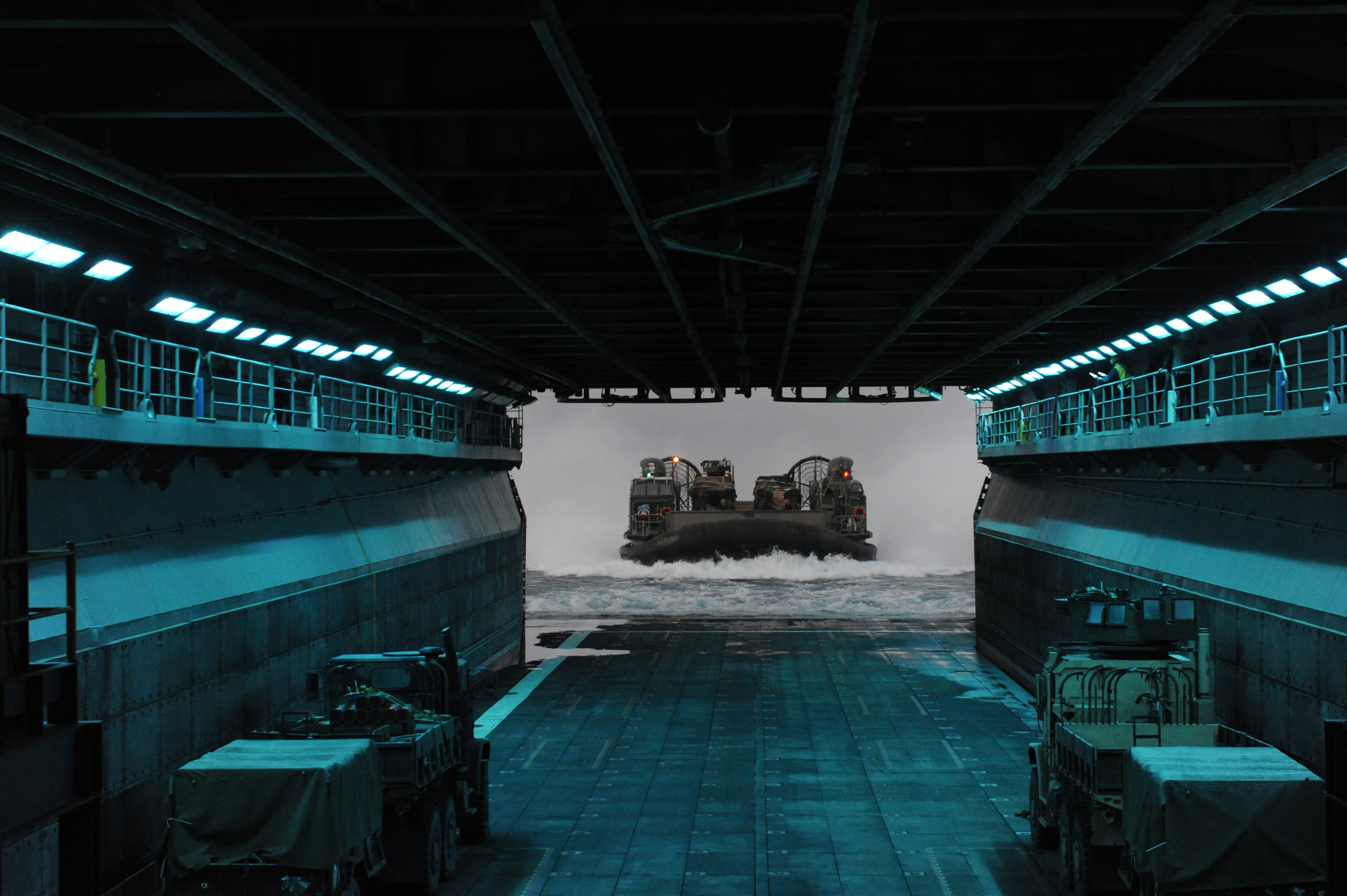
After departing San Diego on Oct. 14, the 11th MEU/ARG spent several days training in Hawaii. About 350 Marines aboard the Comstock spent about a week ashore training in Guam with Japanese forces in exercise “Keen Sword.” It was the first jungle environment some of those Marines have seen, said Lt. Col. John Gianopoulos, the 11th MEU operations officer.
In mid-November, Marines aboard Makin Island trained off Malaysia, in the rainy jungles of the far-eastern end of Borneo, Malaysia, a growing military partner. The bilateral exercise “Tiger Strike” ran Nov. 11 to 13 and helped build the relationship with the Malaysian forces and Marines and sailors, Gianopolous said. Navy dental teams also joined in community-relations events.
Marines embarked on Somerset trained with Sri Lankan Marines during a bilateral exercise Nov. 23 to 25 in Sri Lanka, which in recent years is seeing stronger ties with the U.S. military. “They were very enthusiastic about having the Marines come there. They were very enthusiastic about having a Navy ship there… and cultivate a good relationship,” Gianopoulos said.
Sailors and Marines with the full three-ship, 4,500-member MEU/ARG team in December participated in exercise “Alligator Dagger,” training ashore and off the coast of Djibouti over an 18-day stretch after reaching 5th Fleet and the U.S. Central Command region. “Most MEUs don’t get a chance to do this when they come into theater, train as a whole force like that,” Gianopoulos said.
The exercise enabled the 11th MEU to stretch its logistical legs, including making potable water and running refuel convoys via connectors between the ships and shore. “Being able to be self-sufficient, right from jump in mid-90 degree temperatures for 18 days, exercising every element of the MAGTF, with almost 1,500 folks ashore, it’s challenging and it’s a constant battle,” said Sgt. Maj. Brandon C. Hall, the MEU’s top enlisted member.
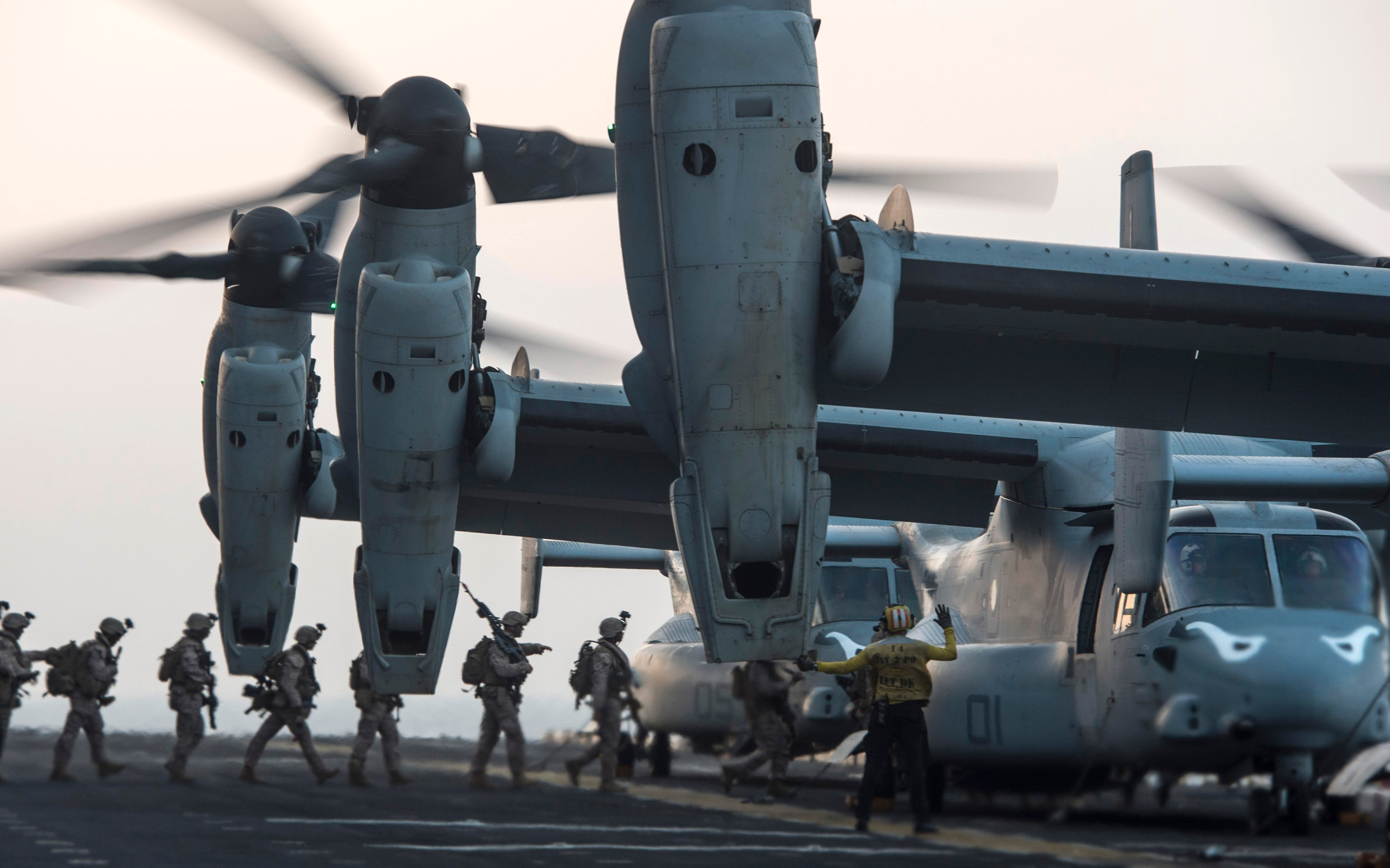
While in the Middle East region – an area that straddles 5th Fleet and 6th Fleet as well as U.S. Central Command, U.S. Africa Command and U.S. European Command – the 11th MEU operated in split-ARG or disaggregated operations.
The MEU/ARG spent about four months in CENTCOM but also were on call to assist U.S. Africa Command. “We were also tasked to support USAFRICOM in a mission inside deeper Africa… in South Sudan in the capital of Juba,” Gianopoulos said. South Sudan, where small groups of Marines and soldiers have deployed to augment U.S. embassy security, continues to see its security environment deteriorate. “We lent support to that mission; we never executed support,” he added.
From Djibouti, Clester headed up the crisis-response force to support the U.S. State Department if needed for what was called Operation Oaken Steel. Juba was about 950 miles from Djibouti, Clester said, so the MEU’s MV-22 Osprey tilt-rotors, “gave that ability for us to reach that far inland.”
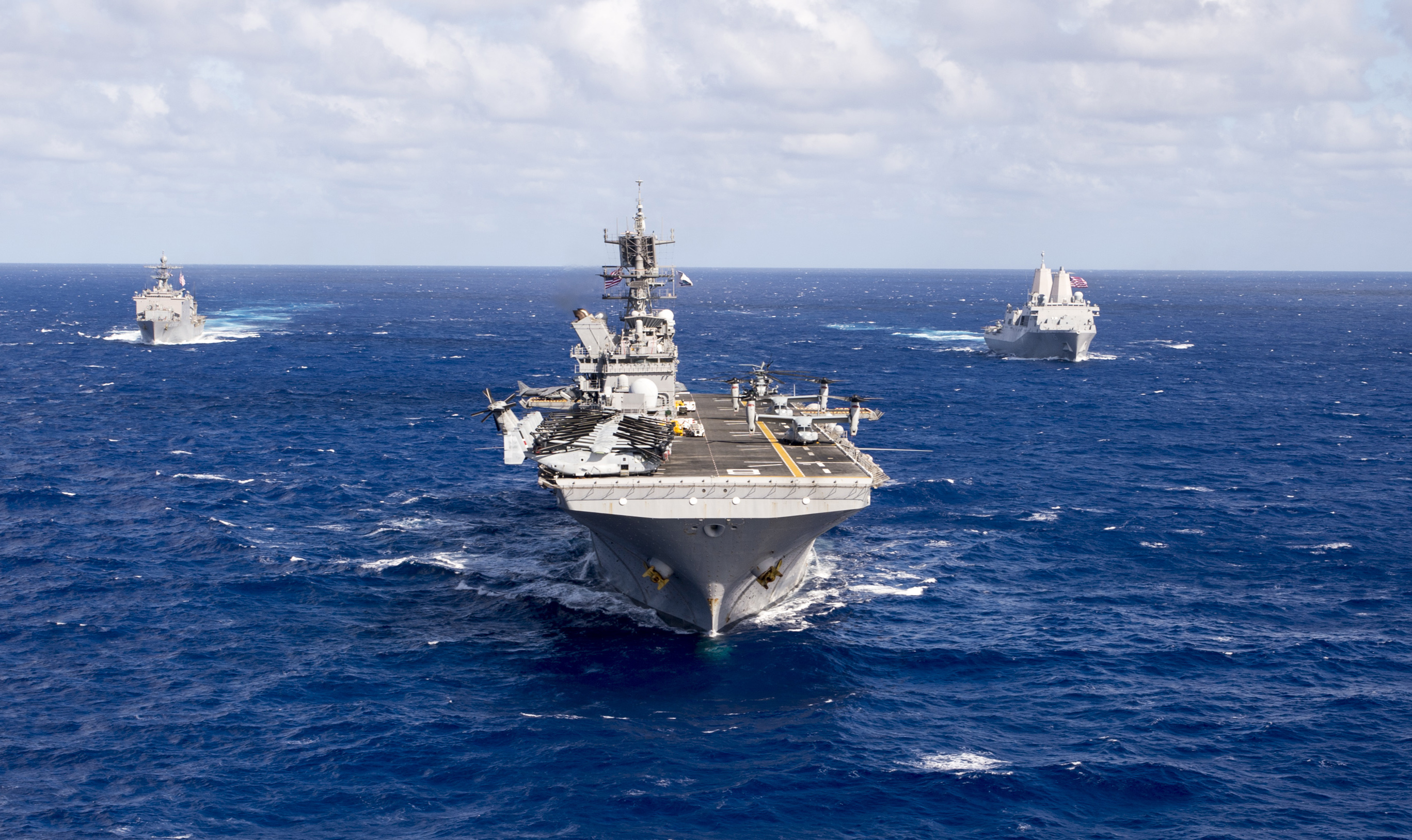
More than 400 Marines went ashore from the Somerset for the bilateral exercise “Sea Soldier” in Oman from Feb. 14 to March 4. “We got a chance to exercise all parts of the MAGTF team,” Gianopoulos said. Along with aircraft, the MEU sent its platoon of tanks and armored vehicles ashore for ground training. “It was pretty significant,” Tipton added.
In late March, the 11th MEU/ARG trained in Sri Lanka’s capital of Colombo as Marines and Navy LCACs from Comstock went ashore for four days of training. As Makin Island headed east toward home, AV-8B Harriers and the MEU’s ANGLICO, or air-naval gunfire liaison company, joined with Malaysian air forces for some live-fire and close-air support training. That all happened in one day, and “we never stopped. We had to do all this…while we were sailing,” said Virges, the MEU operations chief.
About 250 Marines and Comstock spent five days in Port Moresby, Papau New Guinea, training with local defense forces. That nation will host a key regional economic conference next year. Overall, Tipton said, “we stayed busy between real-world operations and exercises” along with engaging with foreign military allies and partners.





